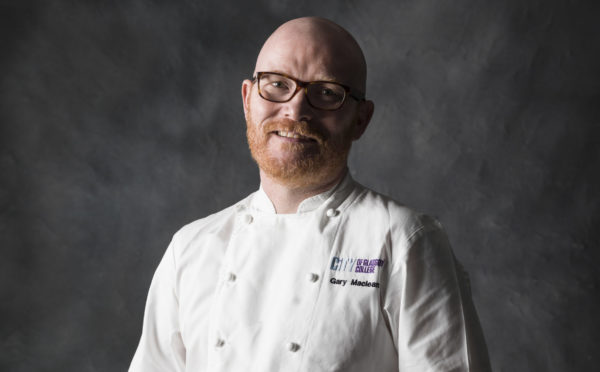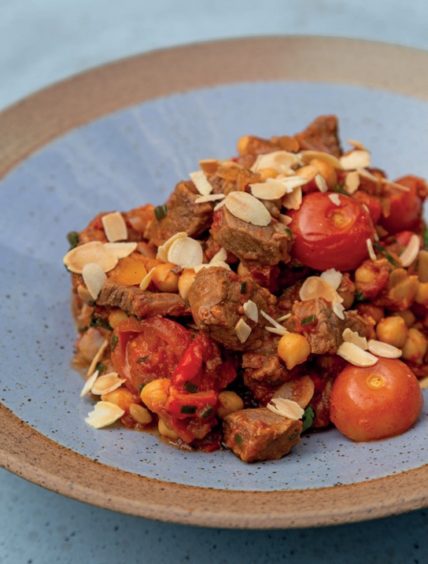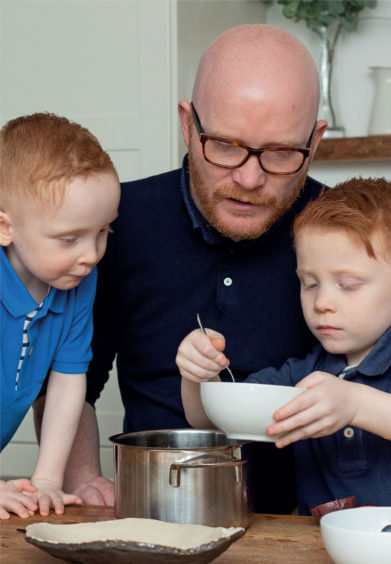
After months of silent kitchens and empty dining rooms, restaurants around the country will soon start to tentatively reopen their doors, welcoming back hungry customers who have spent lockdown frantically trying to remember their home economics lessons.
And while many will be glad to give their pots and pans a rest, flocking to the nearest eatery on July 15, Scotland’s national chef Gary Maclean believes people will be keen to keep developing the cooking skills they’ve learned during lockdown.
What’s more, the past three months could change the way we think about food, as the younger generation develops a passion for baking their own banana bread or whipping up a fresh sourdough loaf.
Gary explained: “Generally speaking, food is not high on our agenda. We need to focus on generational change, concentrating on teaching young people to cook, and creating a food culture where people cook at home – and lockdown has helped hugely.
“To a degree, food has been the only thing we’ve been really in control of over the past few months, so people’s engagement with online tutorials and demos has been unbelievable. There does seem to be a genuine interest in food and home cooking right now.”
He added: “My two wee ones have such an interest in cooking, but now even the 20-year-old is coming in asking if he can help! I’ve been doing a lot of live filming and the kids have been involved, so the food ‘journey’ has been a big part of lockdown.”
In March, many supermarkets saw a huge increase in demand for long-lasting ingredients, such as pulses, tinned foods and flour. Now that we are slowly re-emerging from lockdown, Gary wants to make sure Scotland’s “just in case” food doesn’t go to waste – especially as an estimated 987,890 tonnes of food and drink was binned last year.
He said: “Right at the start of lockdown, a lot of people were picking up an extra few bits and bobs because they felt uncertain about what was going to happen.
“So now is a good time to be talking about food waste because it’s vital it all doesn’t end up in the bin.”
Gary, who works with Zero Waste Scotland, says planning and making shopping lists will ensure we don’t waste food and money, and he advocates cooking in batches to save time, too.
“The last thing you want to do is make a lot of food and then end up flinging it in the bin. Put cooked food in flat covered trays or put the pot in a cold ice bath in the sink – you’ll be surprised how quickly everything cools down and, if cooled quickly, it will keep longer.
“Next, you have to store it properly. In my house, there’s seven of us – five kids! – so I vacuum-pack everything. I know it sounds a bit ‘chefy’ but you can buy a domestic vacuum packer for about £40 online, and they work really well. It doubles the shelf life and also allows you to store food flat, so you can fit more inside the freezer.”
Change how you shop
Meal planning is the first step in helping you start on the journey of a much more varied diet, and will reduce your food waste, too. But be warned, you do have to put some time and effort into meal planning, rather than simply shopping on autopilot, which most of us are prone to do.
Control your portions
I’ve found most household food waste comes from leftovers. The first thing to combat waste is simple; reduce everyone’s portion sizes. I find my kids tend to eat more when there is less on their plate (there is satisfaction for them if they clear their plate) and this can save a huge amount of food going in the bin. If stored properly after cooking, anything that’s not been on a plate can be reused for another meal.
Keep it in the family
Try to avoid serving food directly on plates. Instead, serve meals on platters, bowls or large plates placed in the centre of the table or kitchen counter, allowing everyone to help themselves. Guests won’t feel obliged to eat a plateful which might be too much for their appetite. Kids eat more food this way. Before long they are back up for seconds. This style of serving is rightly enough called “family service”.
Love your leftovers
When it comes to storing leftover food, you have loads of options. The first storage solution is tubs. I was tub mad and all shapes and sizes filled every cupboard in my kitchen. Tubs are great as they are easy to use and inexpensive, but another option is freezer bags. They can be labelled easily, they’re inexpensive, and they freeze and defrost food quickly. Plus, they also take up much less room.
For more handy tips and tricks, visit zerowastescotland.org.uk
Lamb tagine with almonds & bell peppers

It’s lovely to use a traditional Moroccan tagine for this recipe – they have a great earthenware texture and look good on the table – but any large dish with a snug lid will do.
This also works as a veggie dish. Just substitute the lamb with butternut squash, courgette or aubergine.
You’ll need
- 400g lamb shoulder, evenly diced
- 1 tin of chickpeas, drained and rinsed
- 1 red onion, sliced
- 400g tin of chopped tomatoes
- 8 cherry tomatoes, cut into halves
- 1 red pepper, cut into large dice
- 1/2 teaspoon garlic, chopped
- 2 tsp curry powder
- 1/2 tsp ground coriander
- 1/2 tsp ground cumin
- 1 bay leaf
- 50g flaked almonds
- Small dried chilli flakes, optional
- Sprinkle of plain white flour
Method
- Preheat the oven to 160°C.
- Once you have chopped all the vegetables, pop them into a large bowl.
- Then add the diced lamb and the spices, including chilli flakes if you like.
- Next add the tin of tomatoes. Rinse out the tomato tin with 100ml of water and add to the base mix.
- Drain and rinse the chickpeas and add them to the mix.
- Dust with a teaspoon of flour and then give the whole lot a really good mix.
- Place the ingredients in the middle of the tagine or your pot with a tight-fitting lid. Put the lid on and cook in the oven for about two hours or until the lamb is tender.
- Remove carefully from the oven and let it stand for about 15 minutes.
- Top with the sliced almonds and serve.

Enjoy the convenience of having The Sunday Post delivered as a digital ePaper straight to your smartphone, tablet or computer.
Subscribe for only £5.49 a month and enjoy all the benefits of the printed paper as a digital replica.
Subscribe